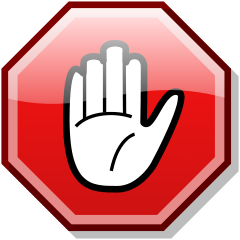SRD:Fly
| This material is published under the OGL 1.0a. |
This topic could also refer to:
Fly
A creature with a fly speed can move through the air at the indicated speed if carrying no more than a light load. (Note that medium armor does not necessarily constitute a medium load.) All fly speeds include a parenthetical note indicating maneuverability, as follows:
- Perfect: The creature can perform almost any aerial maneuver it wishes. It moves through the air as well as a human moves over smooth ground.
- Good: The creature is very agile in the air (like a housefly or a hummingbird), but cannot change direction as readily as those with perfect maneuverability.
- Average: The creature can fly as adroitly as a small bird.
- Poor: The creature flies as well as a very large bird.
- Clumsy: The creature can barely maneuver at all.
A creature that flies can make dive attacks. A dive attack works just like a charge, but the diving creature must move a minimum of 30 feet and descend at least 10 feet. It can make only claw or talon attacks, but these deal double damage. A creature can use the run action while flying, provided it flies in a straight line.
Moving in Three Dimensions
Tactical Aerial Movement
Once movement becomes three-dimensional and involves turning in midair and maintaining a minimum velocity to stay aloft, it gets more complicated. Most flying creatures have to slow down at least a little to make a turn, and many are limited to fairly wide turns and must maintain a minimum forward speed. Each flying creature has a maneuverability, as shown on Table: Maneuverability. The entries on the table are defined below.
Minimum Forward Speed
If a flying creature fails to maintain its minimum forward speed, it must land at the end of its movement. If it is too high above the ground to land, it falls straight down, descending 150 feet in the first round of falling. If this distance brings it to the ground, it takes falling damage. If the fall doesn’t bring the creature to the ground, it must spend its next turn recovering from the stall. It must succeed on a DC 20 Reflex save to recover. Otherwise it falls another 300 feet. If it hits the ground, it takes falling damage. Otherwise, it has another chance to recover on its next turn.
Hover
The ability to stay in one place while airborne.
Move Backward
The ability to move backward without turning around.
Reverse
A creature with good maneuverability uses up 5 feet of its speed to start flying backward.
Turn
How much the creature can turn after covering the stated distance.
Turn in Place
A creature with good or average maneuverability can use some of its speed to turn in place.
Maximum Turn
How much the creature can turn in any one space.
Up Angle
The angle at which the creature can climb.
Up Speed
How fast the creature can climb.
Down Angle
The angle at which the creature can descend.
Down Speed
A flying creature can fly down at twice its normal flying speed.
Between Down and Up
An average, poor, or clumsy flier must fly level for a minimum distance after descending and before climbing. Any flier can begin descending after a climb without an intervening distance of level flight.
| Maneuverability | ||||||
|---|---|---|---|---|---|---|
| Perfect | Good | Average | Poor | Clumsy | ||
| Minimum forward speed | None | None | Half | Half | Half | |
| Hover | Yes | Yes | No | No | No | |
| Move backward | Yes | Yes | No | No | No | |
| Reverse | Free | –5 ft. | No | No | No | |
| Turn | Any | 90º/5 ft. | 45º/5 ft. | 45º/5 ft. | 45º/10 ft. | |
| Turn in place | Any | +90º/–5 ft. | +45º/–5 ft. | No | No | |
| Maximum turn | Any | Any | 90º | 45º | 45º | |
| Up angle | Any | Any | 60º | 45º | 45º | |
| Up speed | Full | Half | Half | Half | Half | |
| Down angle | Any | Any | Any | 45º | 45º | |
| Down speed | Double | Double | Double | Double | Double | |
| Between down and up | 0 | 0 | 5 ft. | 10 ft. | 20 ft. | |
SRD:System Reference Document → SRD:Exploration and Environment → Movement, Position, and Distance
![]() This page is protected from editing because it is an integral part of D&D Wiki. Please discuss possible problems on the talk page.
This page is protected from editing because it is an integral part of D&D Wiki. Please discuss possible problems on the talk page.
